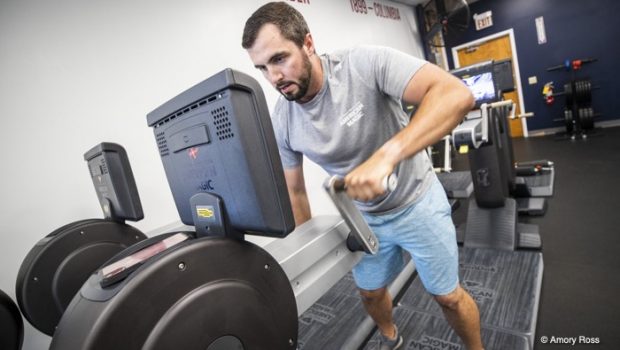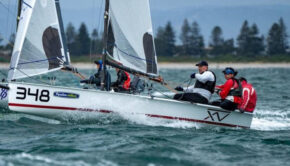Getting Fit to race Faster
Published on September 2nd, 2019
With massive boats and sails that exert thousands of pounds of force, sailors must be in extraordinary shape. David Schmidt, of the New York Times, explains.
There was a time when success in competitive sailing basically required great seamanship, strategy and tactics. Fitness was just part of the mix. That has changed.
Grand Prix racing yachts have always been complex, but powerful hull designs have evolved in recent years with sky-scratching carbon-fiber masts and powerful thermo-molded sails, which exert thousands of pounds of force.
These boats are markedly faster and more athletic than their forebears. Managing a contemporary raceboat is physically demanding, and the crew must execute complex, highly choreographed maneuvers, with great strength and often with minimal notice. Crews that race aboard the fastest boats must be ultrafit and train like Olympic athletes to prepare for world-class regattas.
“Being an athlete is needed, and sailing is moving that way,” said Ryan West, head of athletic performance for the Bella Mente and American Magic racing programs. “We look at sailors as individuals, and we treat them in a holistic manner, including nutrition, hydration and loading, both on and off the water.”
At the Maxi Yacht Rolex Cup, which hosted by the Yacht Club Costa Smeralda in Sardinia, some of the world’s biggest sailing yachts compete, and top teams frequently draw America’s Cup-level sailors, like some of those on Bella Mente, who are expected to race in the Cup with American Magic.
This is not the kind of yachting where stewards serve lunch. It is hard work, and performance is paramount. There is zero patience toward anyone who is not making the yacht sail faster.
Once the team announces a maneuver, the lighter, more nimble sailors scurry to the foredeck to finagle sails, while larger crew members, called grinders, assume their face-to-face battle stations at the boat’s five, two-person grinding pedestals, which deliver power to the manual winches that trim the shape of the sails to match conditions and wind angles. Imagine stationary bikes for the arms.
“There are times when guys are spinning the handles for a short time, but at high intensity,” said Steve Wilson, a design team member for Bella Mente and American Magic. “Other times they’re grinding for longer periods, but at lower power. One is bench-pressing, one is cardio. The big guys are expected to do both.”
Getting into shape for this demanding work requires proper hydration and nutrition, and carefully monitored and role-specific workouts, diet and downtime.
“Rest and recuperation are paramount aspects of allowing athletes to improve,” West said. “When they train, they’re applying a stimulus, but they only get stronger by allowing their body to recover and adapt to the load. So, in addition to training, they need ample time to rest,” which includes one off day per week.
“We run a periodized yearly program,” he said, explaining that the team’s America’s Cup challenge gives them the luxury of a nonstop, multiyear training program. – Full Story.









 We’ll keep your information safe.
We’ll keep your information safe.